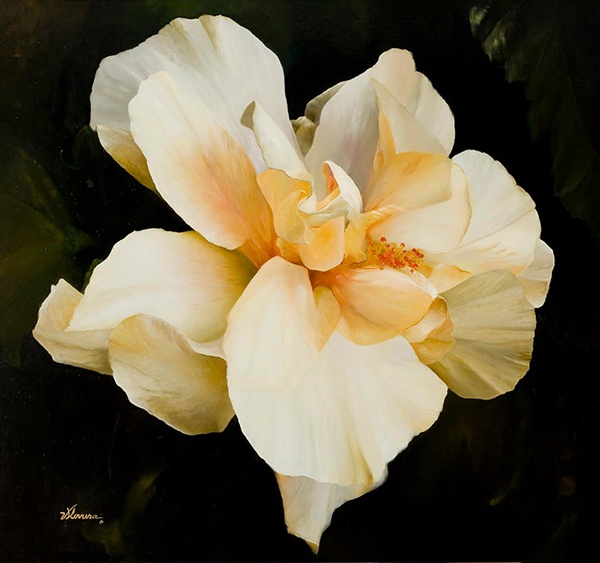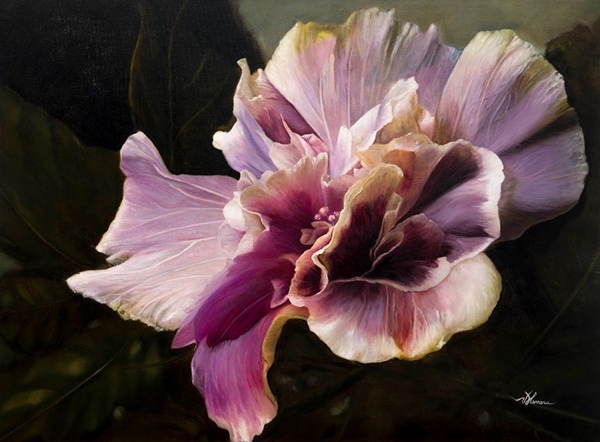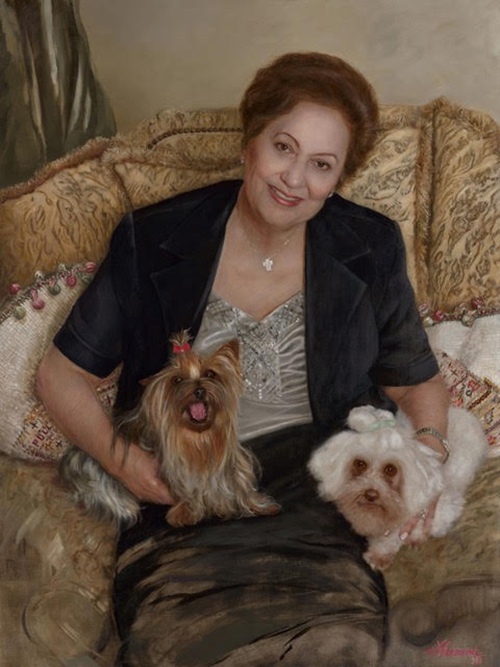
Victoria Herrera’s Exquisite Paintings Reveal Elusive Nature
Victoria Herrera is known for her botanical and figurative oil paintings. Her signature larger-than-normal-sized flower paintings not only depict the intrinsic beauty of nature but also project her perception of life. Greatly influenced by the Old Masters of past centuries, Victoria’s paintings render heightened contrasts between light and dark; they employ translucence creating varying sensitivities within a dramatic scene. Her brilliant usage of hues in combination with degrees of shading further enhances the textures and layerings of the flower while highlighting its ever-changing aspects. Under her brush, each petal comes to life and elegantly displays itself, be it fully embracing the light or shying away from it. Together they present a sophisticated interplay of complexity that is utterly inviting.
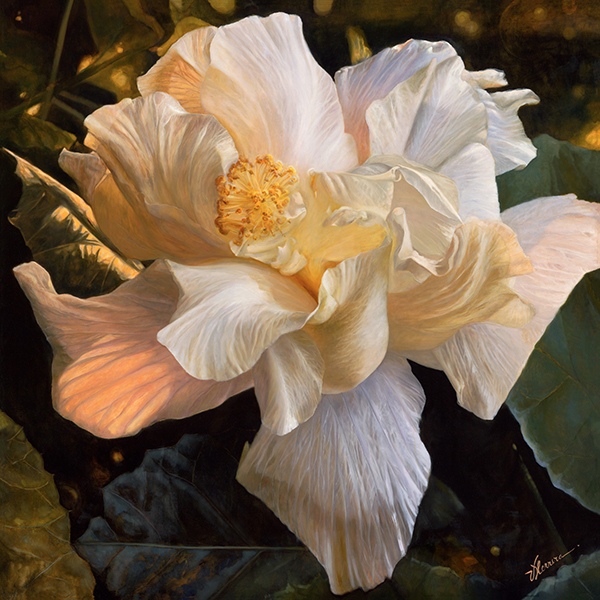
Born in Panama City and currently living in the United States, Victoria shares with us some of her life experiences via the following interview. We hope her story will inspire people by producing fine art and help them to face their struggles in their art creation.
Q: You are one of the leading female artists in U.S. contemporary art. Please share with us the path you took in art training.
A: Thank you so much for that definition of me. I am flattered, however, just like the famous last words of Michelangelo at his deathbed, “I am still learning”. I think artists should never get comfortable and continue to learn and evolve until the end. I realized I wanted to be an artist when I was six years old. I was coloring with crayons while I was on vacation with my family, and I heard a voice that said, “this is what you will do in your life”. I studied with a private mentor throughout high school, then went to Moore College of Art in Philadelphia, studied privately for a year with Mark Tennant and Nelson Shanks at the Art Student League, and took several workshops with Steven Assael. However, it wasn’t until I completed the four-year core program at Grand Central Atelier twelve years ago that I felt I had all the tools necessary to pursue a career full time.
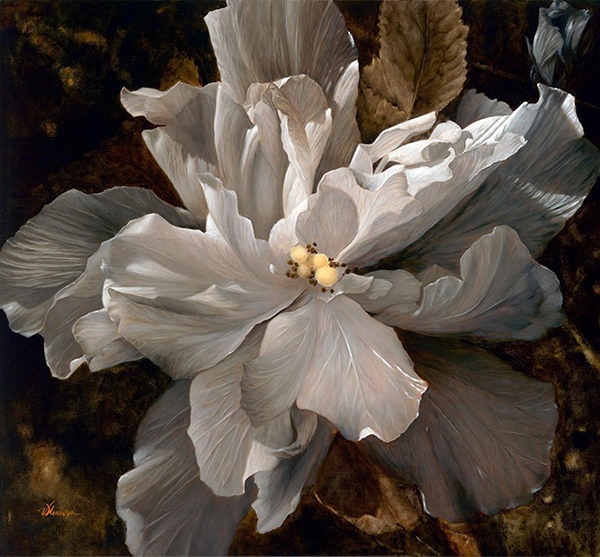
Q: Your signature artwork is centered on flowers. Please tell us why you chose flowers as your main theme?
A: The first botanical painting I did was about 17 years ago when I was studying privately with Mark Tennant. A designer from Panama, where I am originally from, wanted a painting for a show and asked me if I would be willing to do one for it. So, I painted a 72”x72” hibiscus flower in gray/neutral tones. I painted it big and gray so people would notice it. To almost force the viewer to imagine the color, to pause, to observe and discover. We live in a world where we are forgetting to do those things. We may pass a beautiful garden but won’t stop to observe it because we are preoccupied in our minds with conflicts or distracted by social media. It is my intent to give the viewer a reason to pause and rest the eyes, if at least for a few minutes, on something beautiful. There is a lot of hidden symbolism in my flowers as well. The way I handle lights and shadows, for instance, talks about duality and polarity, fear, hope, transformation, life, and death. I juxtapose very realistic passages against more abstract ones and transparent ones against opaque ones to express our need to find equilibrium, which is a state of balance, in our lives.
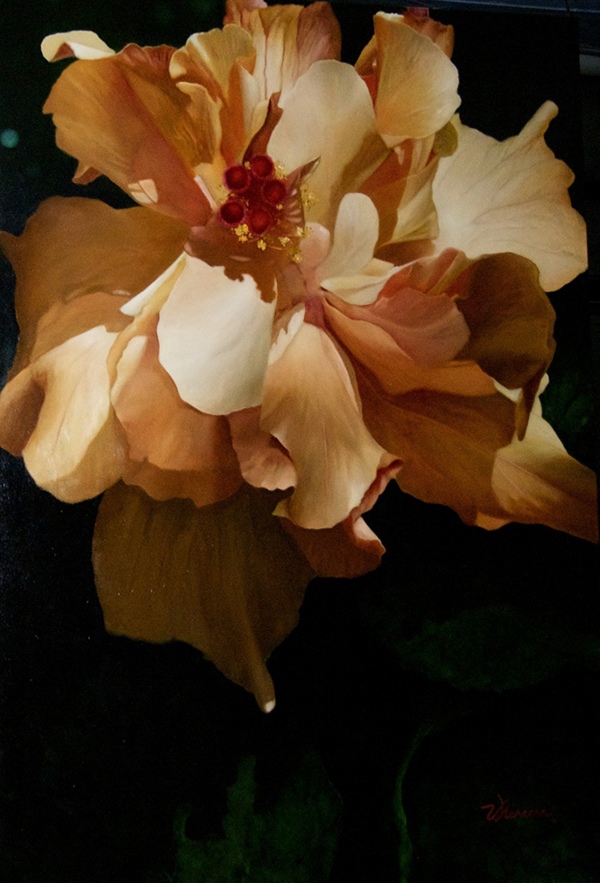
Q: When painting flowers, what elements do you focus on that make your paintings so beautiful?
A: The drawing and composition are the most important part. I like to create a bit of tension in my composition so when painting flowers, I often let the petals bleed off the edges of the canvas. Knowing how to draw gives me the ability and freedom to add or delete parts while I am creating, so I am always focused on the drawing. I do a lot of portrait commissions as well and this is critical. Next, I would say is the accuracy of values and color harmony. Since both my botanical and portraits tend to be large, I work mostly with pre-mixed colors I have mixed and tubed to keep consistent with hue, value, and chroma. Some artists think that doing this is boring and takes time, but I find it does save me a lot of time and confusion.
Q: How have the Old Masters of the 16th ~ 19th Centuries influenced your techniques?
A: Tremendously. My subject matter is contemporary, but my processes and techniques are completely rooted in the techniques used by the Old Masters.
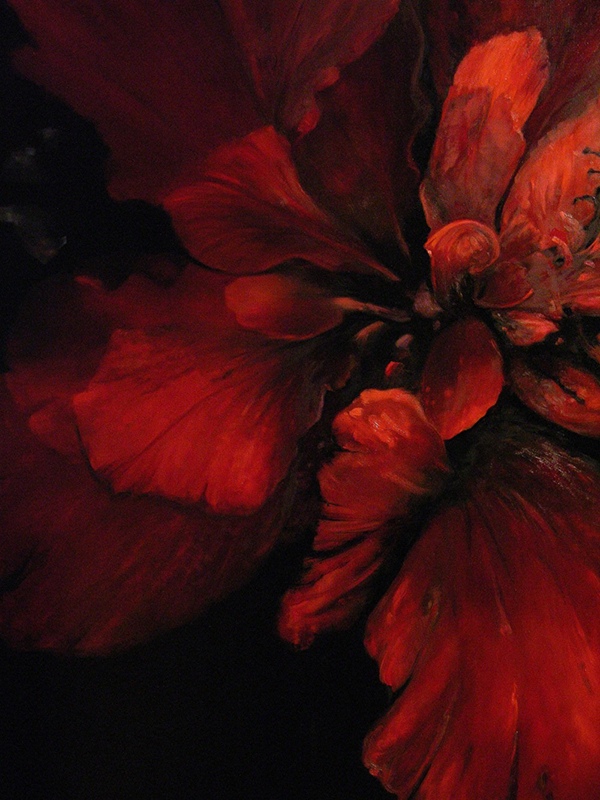
Q: Has there been a significant life experience that influenced your art composition? If so, would you mind sharing this experience with us?
A: The most significant experience I have had in my life is a near-death experience I had twelve years ago. It significantly changed everything about me and the way I experience life and art. It is then when I decided to give a different meaning to my work. It became more spiritual, more symbolic although not very obvious to the viewer. What I felt during that time, the beauty, peace, and full awareness. A state of being in the ‘present’, something hard to describe with words, is what I try to imbue in my artwork with the hope that some of these feelings can be transmitted to the viewers and ultimately the owner of the painting every time they look at it.

Q: Besides botanical pieces, please share with us the other genres you like to paint.
A: I work from the model in my studio whenever possible and I enjoy figurative paintings very much. I have been a finalist in this category in the famous ARC Salon Competition and this year I was a finalist in the prestigious Figurativas competition at the European Museum of Contemporary Art in Spain. I am currently working on five portrait commissions. Unfortunately, I must rely on photographs to produce these, but having learned to draw and paint from life, as well as [a knowledge of] anatomy helps me see beyond the surface of the flat photos. I do not do a lot of landscapes, but I am developing a huge passion for the ocean, and early next year I plan to start experimenting with it.
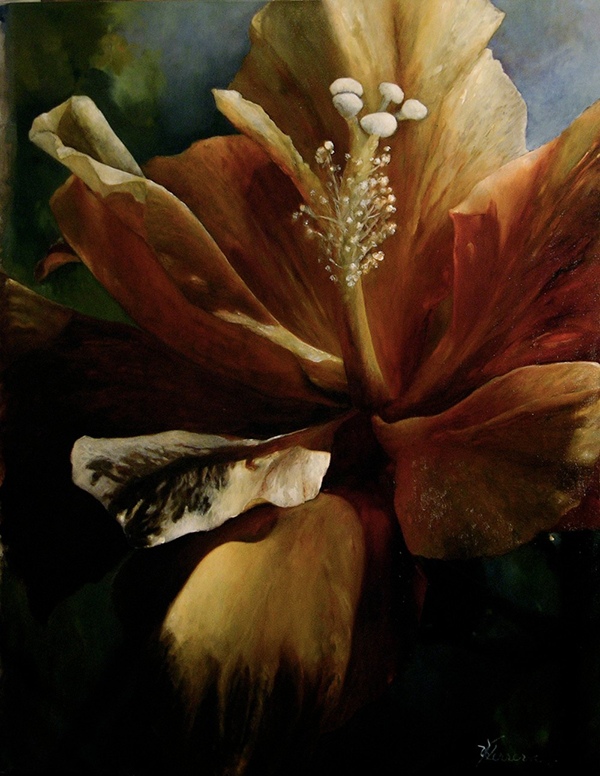
Q: What is your advice for aspiring young artists?
A: Work harder or as hard on yourself as you do on your technique. Learn how to conquer those moments of fear, creative paralysis, doubts, rejection, etc. When fear comes to me to scream in my ear something doesn’t look right in order to distract me or sabotage me, I have learned to invite fear into the process to guide me instead of scaring me. I start talking to the fear as if it was a friend that just showed up in my studio at a really bad time. I politely ask it to go, but with kindness so I can continue to work. Little by little I create a dialogue to make me go back into a state of calm. I look at the mistakes but not with fear anymore but consciously; that is part of the process and in the end, it will be alright. This technique, when practiced over time, becomes very powerful.
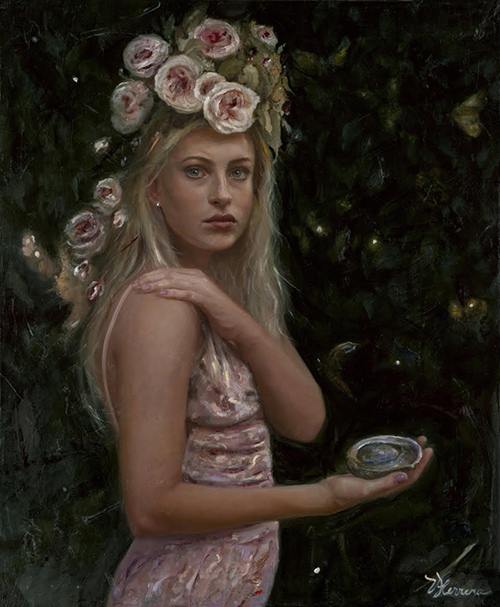
Q: Please share with us your upcoming projects.
A: I will have completed my portrait commissions by February of next year. At that point, I will start working on figurative paintings of my own and on a solo show I expect to have at the end of 2023. I will be incorporating new techniques and subject matter. It will be a very interesting journey that I don’t know where it will take me yet but will be a very interesting one. I feel the need to evolve and reach higher goals with it. I hope to incorporate large paintings of the ocean as well. I will be sharing the whole trajectory through my Instagram page @artbyvictoriaherrera.
